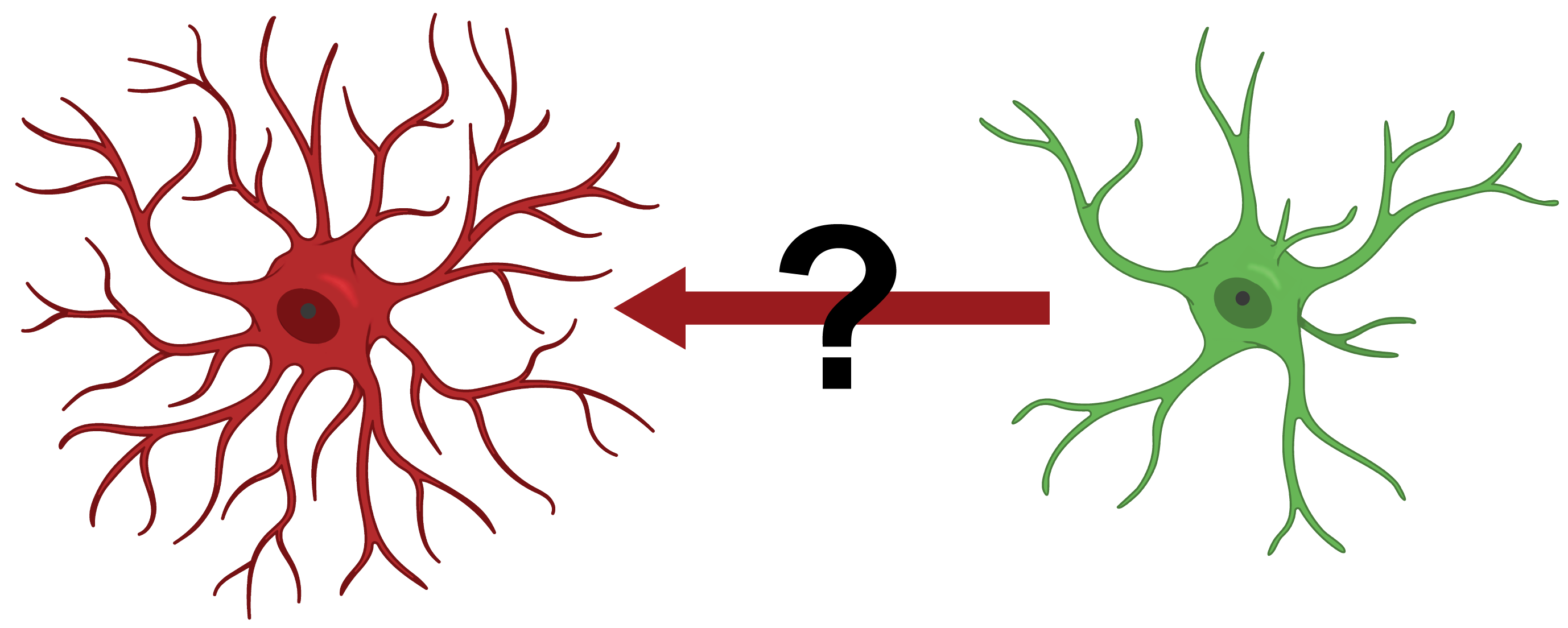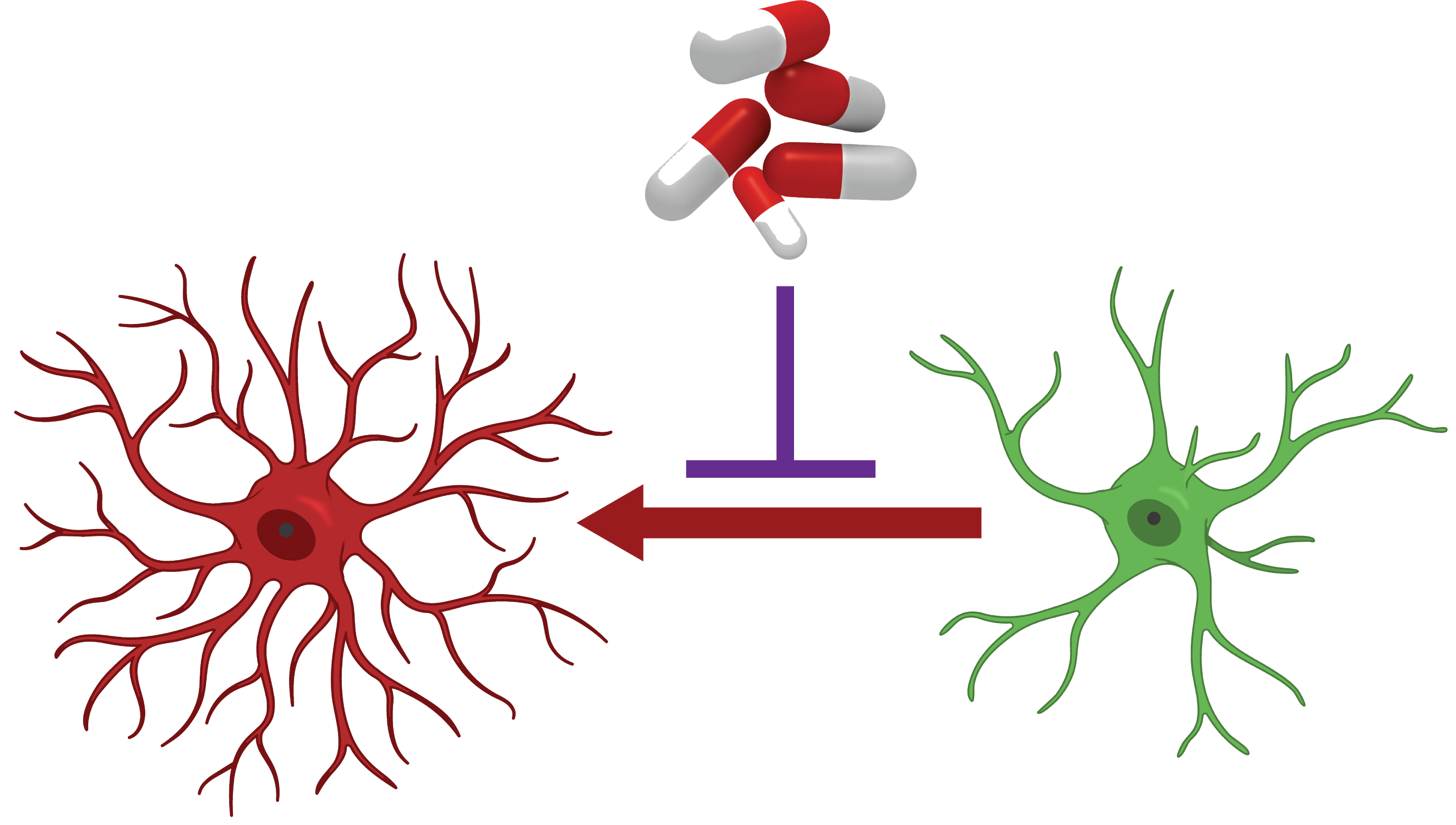Glial cells in the brain play numerous key roles in health and disease. This includes becoming reactive in response to diverse disease related stimuli. We believe reactive glia targeting medicines represent unrealized opportunities for cellular targets for new medicines.
Many big questions regarding reactive glial remain. What protein and pathways regulate glial reactivity in response to different disease stimuli? How do reactive glial cell interactions disrupt or promote critical developmental and regenerative processes in the brain? Can we modulate reactive glia formation and function in disease? Our research aims to tackle these big questions and to ultimately develop glial targeted medicines for the treatment of neurological diseases.
Identifying proteins and pathways that regulate pathological glial states
We recently developed a scalable cellular platform for phenotypic drug screening in reactive astrocytes. Leveraging this platform we performed a drug screen that identified histone deacetylase 3 (HDAC3) as a regulator of pathological reactive astrocytes that form in response to cytokines.
We are expanding on this work to develop similar cellular platforms that can model reactive astrocytes that form in response to disease specific stimuli. We will use these platforms for drug and genetic screening to identify proteins and pathways that can be targeted to modulate reactive astrocyte states in specific disease contexts.
Understanding how pathological glial cell interactions disrupt developmental and regenerative processes
The cell to cell interaction between pathological glia and other glia in the brain contribute to the pathogenesis of neurological diseases. Understanding how pathological glia damage, or disrupt the function of, other glia in the brain may reveal novel approaches to treat disease. We are building advanced cellular systems to explore these cell interactions.
Developing glial targeted medicines for neurological disease
We have recently shown that suppression of pathological astrocytes is protective in disease agnostic models of neurodegeneration and demyelination. We are now investigating whether chemical modulators of pathological reactive astrocytes can protect the brain and/or promote repair in disease specific animal models.
*Images created with BioRender.com





